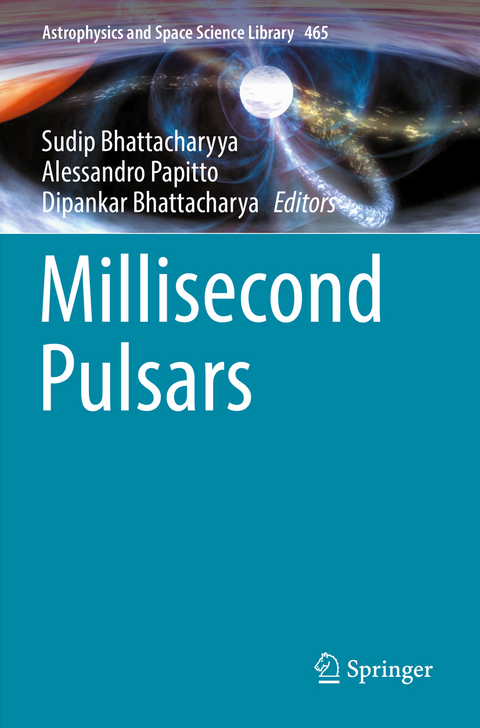
Millisecond Pulsars
Springer International Publishing (Verlag)
978-3-030-85200-9 (ISBN)
What is the behavior of the strong nuclear interaction, and what are the matter constituents at ultrahigh densities in neutron star cores? How do old neutron stars in binaries evolve? How does their magnetosphere interact with the surrounding plasma to accelerate particles and emit radiation observed at all wavelengths? These are just a few of the questions that millisecond pulsarsare helping us answer and will settle in the near future with the next generation of instruments. Such quickly rotating, highly magnetized neutron stars are remarkable natural laboratories that allow us to investigate the fundamental constituents of matter and their interactions under extreme conditions that cannot be reproduced in terrestrial laboratories.
lt;p>Prof. Dr. Sudip Bhattacharyya is a Professor at the Tata Institute of Fundamental Research in Mumbai, India, as well as the Payload Manager of the Soft X-Ray Telescope aboard the AstroSat space mission. He received his PhD in Astrophysics in 2002 from the Indian Institute of Science and the Indian Institute of Astrophysics. In 2007, he received the NASA Space Science Achievement Award. Prof. Dr. Bhattacharyya's primary research interests include neutron stars and black holes, low mass X-ray binaries, X-ray astronomy, and gravitational-wave astronomy.
Dr. Alessandro Papitto is a research scientist at the INAF Osservatorio Astronomico di Roma in Rome, Italy. Ph. D. in Astronomy (2009) at the University of Roma "Tor Vergata", he has been Juan de la Cierva fellow at the Institute of Space Sciences of Barcelona and Marie Sklodowska Curie Individual fellow at its current institute. He has authored more than 100 articles in refereed journals, mainly on millisecond pulsars in binary systems, with a focus on transitional systems. He is co-PI of the fast photometer SiFAP2 for optical high time-resolution astronomy.
Dr. Dipankar Bhattacharya has been a Senior Professor at the Inter University Centre for Astronomy and Astrophysics (IUCAA) since 2007. Previously he was a Professor and Scientist at the Raman Research Institute in India. He received his PhD in Astrophysics from the Indian Institute of Science in 1988. He has authored over 100 refereed research articles and another 100 in conference proceedings and book publications. Currently, Dr. Bhattacharya is interested in high energy astrophysics.
Chapter 1: Radio Millisecond Pulsars.- Chapter 2: The High-Energy Emission of Millisecond Pulsars.- Chapter 3: The Emission Physics of Millisecond Pulsars.- Chapter 4: Accretion Powered X-ray Millisecond Pulsars.- Chapter 5: Nuclear-powered X-ray millisecond pulsars.- Chapter 6: Transitional millisecond pulsars.- Chapter 7: Origin and Binary Evolution of Millisecond Pulsars.- Chapter 8: Millisecond Magnetars.- Chapter 9: The Equation of State of Neutron Star Matter. Index.
| Erscheinungsdatum | 17.03.2023 |
|---|---|
| Reihe/Serie | Astrophysics and Space Science Library |
| Zusatzinfo | XVIII, 321 p. 75 illus., 68 illus. in color. |
| Verlagsort | Cham |
| Sprache | englisch |
| Maße | 155 x 235 mm |
| Gewicht | 522 g |
| Themenwelt | Naturwissenschaften ► Physik / Astronomie ► Astronomie / Astrophysik |
| Schlagworte | accretion disks • Astronomical Clocks • binary systems • emission physics • Exotic Particles • gravitational waves • millisecond pulsar wavelength detection • Neutron Star Equation of State • neutron star magnetic field • Neutron Stars • pulse profiles • thermonuclear X-ray bursts |
| ISBN-10 | 3-030-85200-8 / 3030852008 |
| ISBN-13 | 978-3-030-85200-9 / 9783030852009 |
| Zustand | Neuware |
| Haben Sie eine Frage zum Produkt? |
aus dem Bereich


